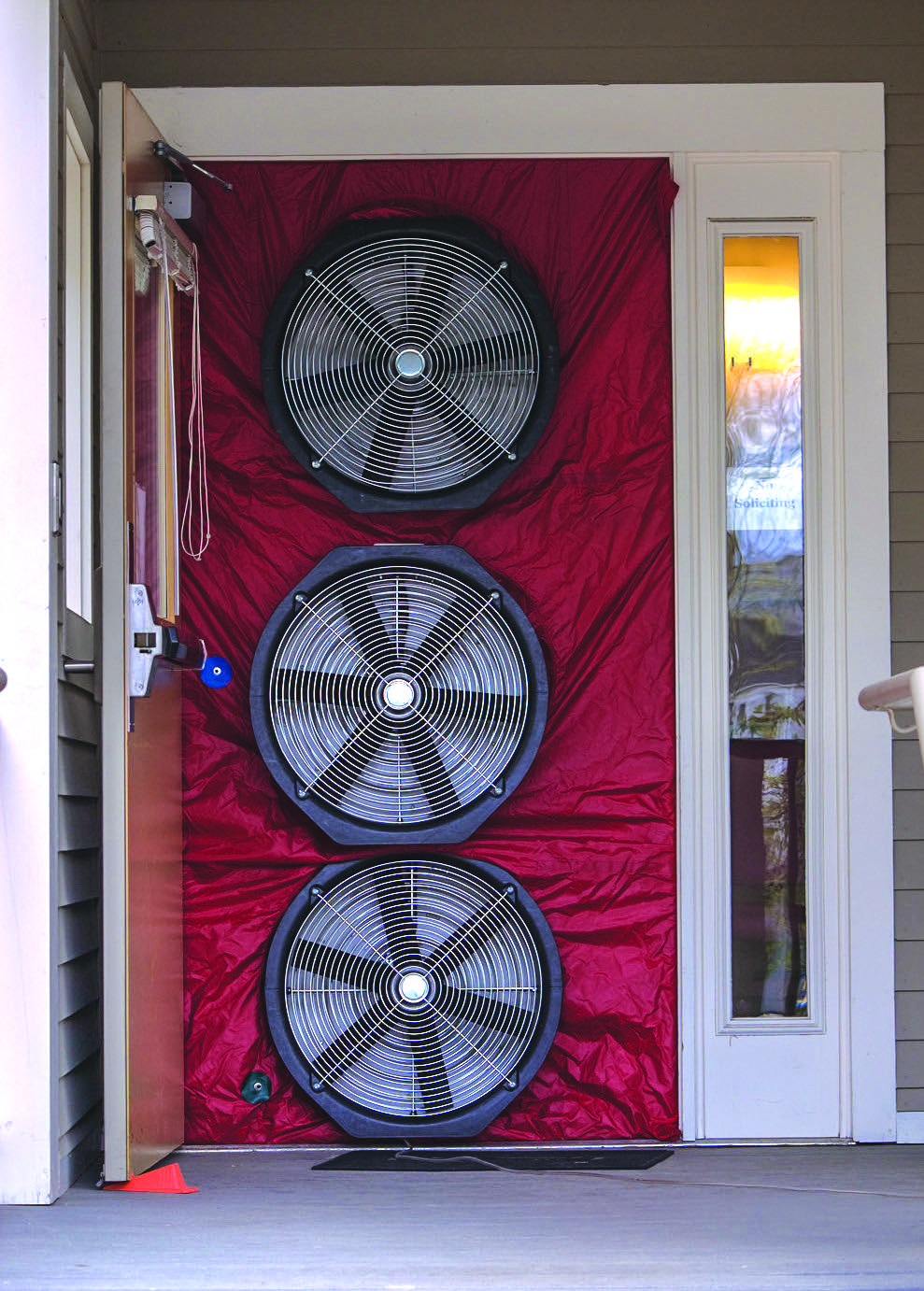Airtightness testing first featured in the Building Regulations in the 2002 edition, which referenced CIBSE TM23. It was a way of showing compliance with a requirement to limit heat loss through the building fabric.
The move to a whole-building calculation method in the regulations in 2006 – a consequence of the original Energy Performance of Buildings Directive – introduced mandatory requirements for airtightness testing. These have been adjusted in the subsequent 2010 and 2013 revisions of the regulations and in the associated statutory guidance given in Approved Documents (ADs) L1A and L2A. Building Regulations set out legal requirements, while ADs offer secretary of state-approved guidance on how to meet them.
Given that the air permeability value calculated from the pressure test will be used to work out the carbon emissions rate, this is a significant number
The term ‘airtightness’ is widely used in practice, but the more precise ‘air permeability’ is employed in the ADs. The air permeability of a dwelling or building can have a significant effect on the carbon emissions calculation, and on ensuring adequate purpose provided ventilation. For anyone undertaking pressure testing to measure the air permeability of a building in connection with the Building Regulations, Regulation 43 ‘Pressure testing’ is required reading. A key requirement is that the pressure test is carried out on any building within the scope of Part L, ‘in such circumstances’ and ‘with a procedure approved by the secretary of state’. Notice of the test results shall be given to the local authority within seven days of the test.
The procedure currently approved for pressure testing is given in the Air Tightness Testing & Measurement Association (ATTMA) publication Measuring air permeability of building envelopes (dwellings) October 2010 issue, and Measuring air permeability of building envelopes (non-dwellings) and specifically uses the method that examines the envelope area. The preferred test method has trickle ventilators temporarily sealed rather than closed.
Building Control Bodies (BCBs) should also be given evidence that test equipment has been calibrated within the previous 12 months, using a UKAS accredited facility. Section 4 of the ATTMA publication describes the approved manner for recording the results and the data on which they are based.

Air tightness test
The AD makes clear that testing must be carried out in accordance with the ATTMA procedure. On that there is no latitude, it is a clear requirement. But there is latitude over who undertakes the testing. There are currently two authorised schemes with which pressure testers may be registered: the ATTMA one or the Independent Airtightness Testing Scheme (iATS) – but there is no requirement for a tester to register with any scheme.
Air pressure testing results can be submitted to a BCB in two ways. Regulation 43(4) authorises BCBs to accept a certificate from a member of one of the two schemes authorised by this regulation, stating that the pressure testing of a building has been carried out in accordance with the procedure approved by the secretary of state. Alternatively, someone who is not a member of an authorised scheme may carry out testing. Instead of a certificate, they must submit a notice – under regulation 43(2) and (3) – setting out the results of the test and the data on which the results are based. A BCB may take account of the information supplied in the notice in coming to its decision, both on whether the test results are a true reflection of airtightness in a building, and that the approved procedure has been followed.
BCBs may also take account of any training undertaken by the tester to show they are sufficiently skilled to carry out the test, and details of how and when calibration of test equipment has been carried out. Ultimately, it is for the BCB to determine whether or not they consider the report submitted under regulation 43(3) satisfactory.
The air permeability value calculated from the pressure test will be used to work out the carbon emissions rate. A BCB that questions the air permeability figure or test procedure may also question the carbon emissions calculations that rely on the air permeability test result.
Readers engaged in aspects of pressure testing may wish to review the AD, Regulation 43, and the associated guidance to ensure they are fully aware of the requirements and the approved methodology, as well as the requirements to notify Building Control.
Hywel Davies is technical director at CIBSE
